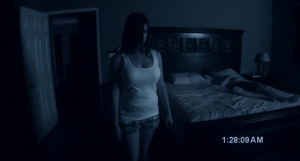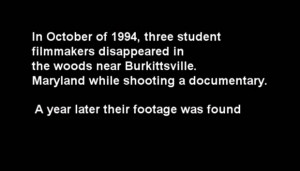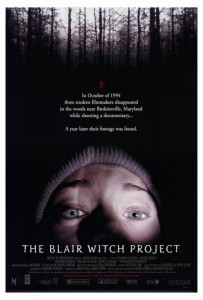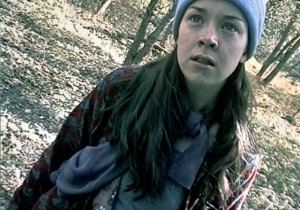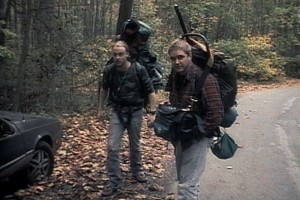The “found footage” genre is very popular among horror films these days. The idea is that the movie’s filmed in such a way that it looks like it was captured documentary style by an ordinary camcorder or smartphone. The movie then plays out in realtime under the guise of it being “found” by someone who didn’t film it. On the contrary, the person behind the camera can also an integral part of the picture. This style helped popular horror series, Paranormal Activity, become the hit that it is.
When something doesn’t look like it was film professionally, it gives it a more genuine feel and gives off the illusion that anything can happen. This particular filmmaking technique was actually popularized a full decade before Paranormal Activity hit the scene. It all started with a little film you might’ve heard of: The Blair Witch Project.
Though found footage has been used in horror since the 1980s, it wasn’t until the Blair Witch Project was released that the concept was brought to the forefront. Not a lot of people at the time had seen a film recorded in this style and moviegoers flocked to the theater. Released in July of 1999, this little scarefest was produced on a budget of a measly $22,000; a shockingly low number for a feature film. It went on to gross nearly $250 million worldwide making it one of the most profitable films of the summer. That’s quite an impressive feat.
I’ll try to explain the film in the most spoiler free way possible: The movie is about three young college students who go missing trying to research the old legend of the Blair Witch. The footage we see is what’s found a year, in 1995, after their disappearance in 1994. The youngsters travel to a Northeastern town in the U.S. to conduct interviews of locals who know of the Blair Witch and document any evidence of its existence. We find out that the legend stems from an insane vagabond who senselessly murdered children, claiming to be possessed by a witch who was hanged in the 18th century. Our protagonists set up camp in the nearby woods but run into several problems including hearing suspicious noises and losing their map, leaving them stranded in the middle of nowhere. They’re eventually able to find their campsite but one of them soon goes missing and the remaining two characters see their possessions tampered with. Fearing the worst, they set off in pursuit of their colleague but get way more than they bargained for in their journey.
The movie landed on DVD and VHS a week before Halloween that year. I was only 13 when this dropped. Luckily, I was able to rent it from the local video store the weekend it came out and was so stoked to see it. I had bought into all the hype. I watched it late one night in my bedroom with the lights turned off and the sound turned up to give it that authentic spooky feel. Well, I popped the tape in and fell asleep during the last half hour. I watched what I missed the next day and still didn’t care for it. Maybe it was the fact that I was still a young teen and my expectations for a textbook horror film were still blood and guts spewing everywhere but I wrote this one off as a clunker. A lot of my middle school buddies told me they felt the same way. To me, it was looking like it was a victim of its own hype. One of the things I remember hating was the girl who kept screaming about the map being lost. That bugged me a lot. I was thinking, ‘man, shut the hell up, already!’ For years, this stood at the top of my “worst films ever” list.
After doing more research on The Blair Witch Project, I decided to check it out again when I was a little older. I certainly appreciated it a lot more the second go around. I still don’t care for the movie as a whole all that much and feel similar films have surpassed it but I do appreciate what vision the filmmakers were going for. The fact that you couldn’t see what was driving the characters insane was my favorite aspect of it.
Regardless of my personal opinion of the film, I do respect what it did for not only horror films but film making in general. I love the fact that this tiny independent feature that was filmed with almost no money became one of the most talked about movies of the year. Certainly the people involved didn’t know this would become one of the biggest indie flicks ever. The interest it generated through the internet at a time when it wasn’t the huge powerhouse of promotion it is today was admirable as it got the whole world interested.
The success of the movie led to a little talked about sequel that was rushed into production. The result was 2000’s Book of Shadows: Blair Witch 2 and it abandoned the found footage genre in favor of a more traditional horror feature. It follows another group of people traveling to the site of the Blair Witch after viewing the first film to investigate the legend themselves. The movie is quite forgettable but contains an early role for Jeffrey Donovan of Burn Notice fame. A third film has been rumored but nothing official has been announced as of now.
The movie was parodied numerous times, the most famous probably being in the horror satire, Scary Movie. I also recall MTV doing a lot of spoofing themselves during bumpers between programming.
The found footage tactic was re-introduced to mainstream film with the 2008 monster movie, Cloverfield. Produced by J.J. Abrams, this pits several New York City residents trying to outrun the terror brought onto the Big Apple by a Godzilla-like creature all while being filmed by a different character throughout the picture. It received mainly positive acclaim and it looked like a trend was on the rise using this process of movie making. The legendary George A. Romero even made use of this technique for his fifth entry in the Dead series, Diary of the Dead, also in 2008.
While Paranormal Activity may hold the crown for this mode of horror film, there are other movies that have kept the trend thriving. I hope I shined some light on its beginnings of influence.

